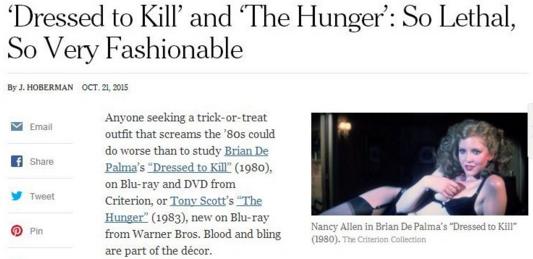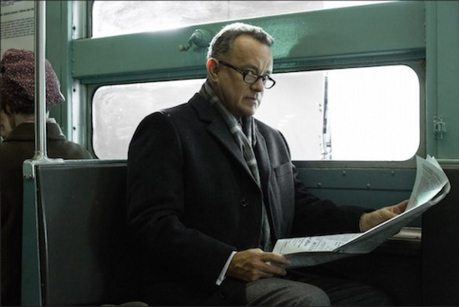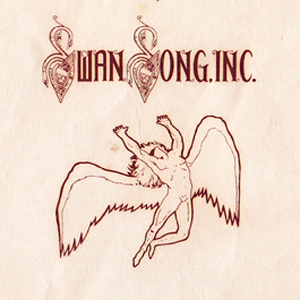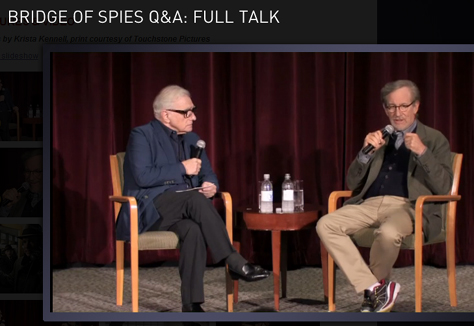UNICORN BOOTY: "THE 5 FAVORITE HORROR MOVIES OF QUEER STUDIES PROFESSORS"
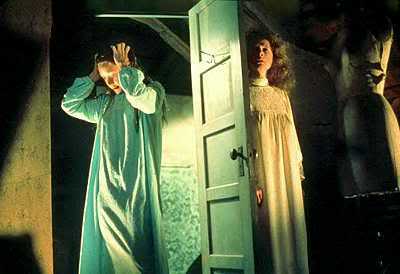 Matthew Lawrence at Unicorn Booty posted an article this week titled, "The 5 Favorite Horror Movies Of Queer Studies Professors." Brian De Palma's Carrie was chosen by three out of the eight professors, which included our old friend David Greven. "There’s a zillion listicles about the best queer horror movies of all time," Lawrence states in the introduction, "but to be honest the films are often campy as hell, have laughably low-budget production values or just plain suck. So we asked some experts — LGBTQ academics who study film, media, queer studies and, in a few cases, queer horror films specifically. Their eight answers have a lot in common – note all the Hitchcock shout-outs – but it seems that there is clearly one reigning queen of the horror prom. Get your tampons ready."
Matthew Lawrence at Unicorn Booty posted an article this week titled, "The 5 Favorite Horror Movies Of Queer Studies Professors." Brian De Palma's Carrie was chosen by three out of the eight professors, which included our old friend David Greven. "There’s a zillion listicles about the best queer horror movies of all time," Lawrence states in the introduction, "but to be honest the films are often campy as hell, have laughably low-budget production values or just plain suck. So we asked some experts — LGBTQ academics who study film, media, queer studies and, in a few cases, queer horror films specifically. Their eight answers have a lot in common – note all the Hitchcock shout-outs – but it seems that there is clearly one reigning queen of the horror prom. Get your tampons ready."Here are the three who chose Carrie, and what they had to say about it:
David Greven, Professor of English at the University of South Carolina
Hitchcock’s Psycho, with its sense of an essential bleakness at the heart of modernity, is the greatest horror movie ever made. But to choose my personal favorite, it is without question Brian De Palma’s 1976 film Carrie, starring Sissy Spacek and Piper Laurie and based on Stephen King’s novel.The film has a mythic, fairy tale, revenge-plot narrative that speaks to timeless themes – the outsider, the ostracized, the pariah. “The Outcast of the Universe,” to use Hawthorne’s phrase. Carrie White, played so magnificently and poignantly by Sissy Spacek, is the the pariah we can all relate to. We get to know and understand her and like her and root for her so intimately that all of the pain and terrible abuse she suffers hurts us as well. The queerness of the film emerges in part from this shared experience of shame and abuse. Brian De Palma’s masterful, voyeuristic, deeply emotional filmmaking style makes the whole experience of watching this film uncannily, intimately personal. Carrie White’s emergent telekinetic powers are directly linked to the terrors and the pleasures of her emergent sexuality — and it is this dynamic that makes the film so queer. In addition, it has a dreamy, fantasy aspect in which we are put in the position of longing for but then – fleetingly –attaining a romantic ideal, in this case the blonde, charming, sensitive prince Tommy Ross (William Katt).
The other queer dimension, oddly, is that this is a film entirely dominated by female power. Carrie’s crazy, sensually passionate religious fundamentalist mother Margaret White (Piper Laurie) commands attention, but so do the gym teacher Miss Collins (Betty Buckley), the would-be do-gooder Sue Snell (Amy Irving) whose misguided attempts to solve Carrie’s problems put the horror-plot in motion, and the smudgy-lipped teen villain Chris Hargenson, played with aplomb by Nancy Allen. Male power takes a decided back seat to these vivid, memorable women and the dark power they wield. Miss Collins, far from a blandly sympathetic character, is actually quite suspect. You wonder if she may indeed be laughing at Carrie at the prom! She certainly seems to have an overly intense need to punish Chris and may be the person that Chris really wants to punish.
As I argue in my book Representations of Femininity in American Genre Cinema, the movie retells the story of Demeter and Persephone. The famous prom sequence is justly celebrated, but the sequence at the climax – largely De Palma’s own invention – in which Carrie kills her mother by telekinetically impaling her with kitchen utensils, is just as brilliant. One thing about De Palma: you can be laughing, or feeling terrified, and then suddenly you’re emotionally wounded in a profound way. The keening cry that bursts out of Carrie when she realizes that her mother is dead and that she is now utterly alone – that’s the true moment of movie horror.
Darren Elliott-Smith, Senior Lecturer in Film and Television at the University of Hertfordshire
I’m always reticent to say what my favourite horror film is, as you will probably appreciate there are so many. At the moment and regularly throughout my life, Carrie often thrusts its undead hand into my consciousness. Despite De Palma’s tendency to rip Hitchcock: the style of direction, use of colour and editing are often wildly excessive.Excess I think is what appeals to the queer viewer, taking pride (and shame) in outrageous spectacle: the frenzy of split screen slaughter, the scenery chewing hysteria of Piper Laurie’s Margaret White, the pig’s blood spattered palette of the red, white and blue of the American dream. It is a nostalgically campy and cult film, it is genre-bending, it is a spectacularly made, classic teen-melodrama-horror. Empathising with the burgeoning sexuality of Carrie, her humiliation, the fantasy of revenge – the film speaks clearly to the queer spectator as a coming out tale. The shame Carrie experiences resonates with the queer spectator who fears that “They’re all gonna laugh at you!”
Christopher Mitchell, lecturer at Rutgers University
It’s hard to pick one favorite, but if I had to it’s probably one that a lot of others will choose: Carrie. There’s really nothing I can say that hasn’t been said before about this film, but the real horror of the movie isn’t the supernatural stuff. It’s all the supposedly normal stuff in our everyday lives.From a queer lens, in which the normal evokes horror, Carrie seems to have all of it, but I’ll follow the rule of three here and just point out the following three big observations, which, again, are hardly original: first you have the adolescent body that becomes an object of horror in the context of the American high school (the opening scene [of Carrie having her period] in the girl’s locker room), then there’s the violence latent in Christianity and its ability to transform parenthood into filicide (Carrie’s mother), and finally the bloody rites of a social hierarchy that stigmatizes outsiders (when Carrie is literally marked with pig’s blood).
The best part of this horror film is that it’s not really possible to identify a single villain: Chris Hargenson and Carrie’s mom are not really individual villains, they’re basically stereotypes and agents of the larger cultures (the church and the schoolyard) that they parrot. I would entice a friend to see it by either saying “It’s so good!” or, y’know, subtle intellectual shaming, because academics are trained to persuade people to consider media in this way.




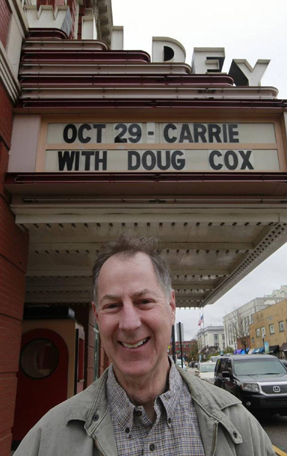 Doug Cox, who played Freddy “The Beak” Holt in Brian De Palma's Carrie, will take part in a Q&A following a screening of the film tonight (Thursday) at 7pm at the
Doug Cox, who played Freddy “The Beak” Holt in Brian De Palma's Carrie, will take part in a Q&A following a screening of the film tonight (Thursday) at 7pm at the 
